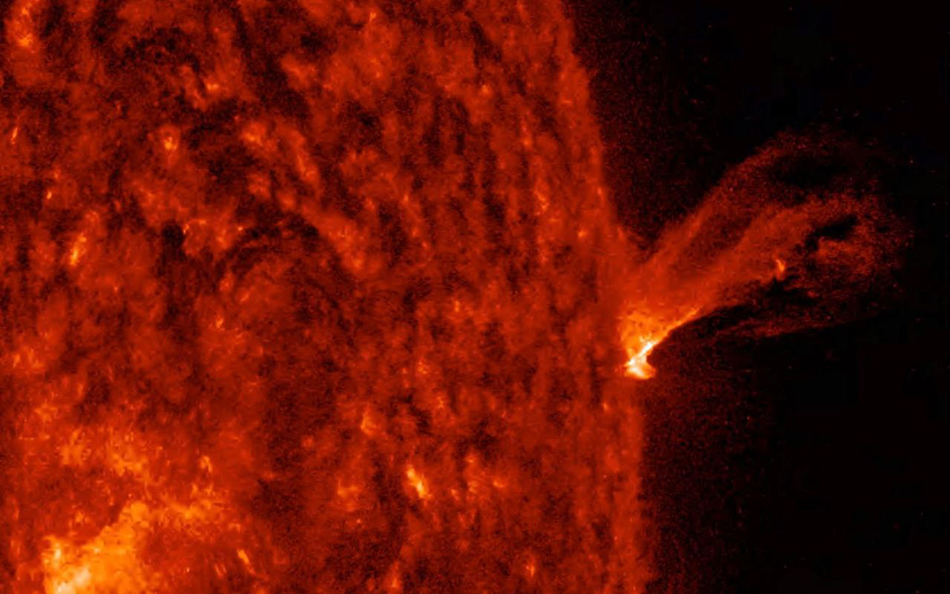A 1972 solar storm triggered a Vietnam War mystery
Coronal mass ejection caused sea mines to explode
Nov 15, 2018 - by Staff
Nov 15, 2018 - by Staff

A minor eruption of charged particles, captured by the NASA Solar Dynamics Observatory on August 13, 2018. (Image: NASA JPL)
On Aug. 4, 1972, U.S. military pilots flying south of Haiphong harbor in North Vietnam saw something unexpected. More than two dozen sea mines suddenly — and without apparent explanation — exploding in the water.
Now, Delores Knipp — an engineering professor with the University of Colorado Boulder and a senior research associate at the National Center for Atmospheric Research — has dug into this four-decades-old naval mystery with a team of researchers. In a commentary published recently in the journal Space Weather, the team reports that the mines were likely triggered by magnetized gas flung at Earth from a recent solar storm.
The research, which Knipp said was inspired by “a fragment of a memory,” uncovers a chain of events around the sun and on Earth that had largely been lost to history. It also suggests that the 1972 solar storm was more serious than many researchers at the time suspected.
Knipp said that the case of the exploding mines highlights the world’s current vulnerability to a similar space weather event.
“In the process of researching this event, I realized that this was, in fact, a great storm. But it was also such an odd storm in the way it developed and the way it hit the Earth,” said Knipp, also of the Colorado Center for Astrodynamics Research. “What this event does is give us a sense of range of what these great storms could look like.”
For more, see the University of Colorado Boulder news release.